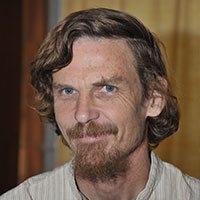A short history of MNREGA: 20 years in 10 charts
Launched in 2005, the Mahatma Gandhi National Rural Employment Guarantee Act (MNREGA) has completed 20 years. In this post, Drèze and Ramesh reflect on the programme’s achievements, failures, and f...
-
 Jean Drèze
Jean Drèze  Rahul R
Rahul R  31 July, 2025
31 July, 2025
- Articles
What broad lessons have we learned from 115 studies on unconditional cash transfers?
Globally, around 700 million people currently live in extreme poverty, and in recent years, unconditional cash transfers have emerged as a popular tool for poverty alleviation in low- and middle-incom...
-
 Tommaso Crosta
Tommaso Crosta  Dean Karlan
Dean Karlan  Finley Ong
Finley Ong  Julius Ruschenpohler
Julius Ruschenpohler  Christopher Udry
Christopher Udry  20 June, 2025
20 June, 2025
- Articles
Food deprivation: A thali index reveals what poverty estimates do not
Poverty in India is typically estimated based on a poverty line that identifies the purchasing power needed to satisfy the daily calorific intake deemed necessary. In this post, Balakrishnan and Raj m...
-
 Pulapre Balakrishnan
Pulapre Balakrishnan  Aman Raj
Aman Raj  06 June, 2025
06 June, 2025
- Perspectives
What is happening to rural welfare, poverty, and inequality in India?
An analysis of the draft National Statistical Office report that the Government has decided not to put out shows a deterioration in 2017-18 in consumption and poverty levels in rural India. The reason...
-
 S. Subramanian
S. Subramanian  10 January, 2020
10 January, 2020
- Articles
Economic mobility in India: Estimation using ‘noisy’ data
There has been a dramatic rise in inequality in India post-liberalisation. This article finds economic mobility to be markedly low, with at least seven out of 10 poor households remaining poor or at-r...
-
 Hao Li
Hao Li  Daniel L. Millimet
Daniel L. Millimet  Punarjit Roychowdhury
Punarjit Roychowdhury  18 September, 2019
18 September, 2019
- Articles
EWS reservation in higher education: Affirmative action or vote bank politics?
The Constitution (103rd Amendment) Act, 2019, provides for 10% reservation for the economically weaker sections (EWS) in higher educational institutions within the general category. In this post, Devi...
-
 Devika Malhotra Sharma
Devika Malhotra Sharma  11 September, 2019
11 September, 2019
- Perspectives
Household-level effects of affordable housing: Evidence from Mumbai
Programmes involving sale of subsidised houses to lower-middle class households have been spearheaded in all major Indian cities. This article studies the effects of one such programme implemented thr...
-
 Tanu Kumar
Tanu Kumar  04 September, 2019
04 September, 2019
- Articles
Challenges in decentralised implementation of centrally mandated anti-poverty programmes
Even when the central government is committed to a jobs guarantee, rationing of work opportunities can arise under decentralised implementation in poor places. This article examines India’s efforts ...
-
 Martin Ravallion
Martin Ravallion  09 August, 2019
09 August, 2019
- Articles
Wealth inequality, class, and caste in India: 1961-2012
The level of wealth inequality in India is close to that of some highly unequal countries in the world. This article assesses the long-term evolution of wealth inequality in the country for the period...
-
 Nitin Kumar Bharti
Nitin Kumar Bharti  28 June, 2019
28 June, 2019
- Articles
What do poor people think about direct cash transfers?
Based on a survey conducted over November-December 2018 with 3,800 respondents in rural Bihar, Khemani, Habyarimana, and Nooruddin present descriptive evidence on what the poor citizens of India think...
-
 James Habyarimana
James Habyarimana  Stuti Khemani
Stuti Khemani  Irfan Nooruddin
Irfan Nooruddin  06 June, 2019
06 June, 2019
- Perspectives
NYAY e-symposium: Tool for addressing multidimensional poverty
Ashwini Kulkarni (Director, Pragati Abhiyan) puts forth the view that an unconditional income transfer programme like NYAY can help address multidimensional poverty and enable the most vulnerable amon...
-
 Ashwini Kulkarni
Ashwini Kulkarni  03 May, 2019
03 May, 2019
- Perspectives
NYAY e-Symposium: Prioritise expansion of National Social Assistance Programme
Dr Pronab Sen (Country Director, IGC India) argues that the first priority should be to expand existing social security, which covers the elderly, the handicapped, and widows – given the fact that m...
-
 Pronab Sen
Pronab Sen  03 May, 2019
03 May, 2019
- Perspectives
NYAY e-Symposium: Crucial to look into taxes for financing
Prof. S. Subramanian (National Fellow, Indian Council of Social Science Research) emphasises the importance of dealing directly with the question of enhanced taxation and some estimate of the likely o...
-
 S. Subramanian
S. Subramanian  03 May, 2019
03 May, 2019
- Articles
NYAY e-Symposium: The potential macroeconomic impact of NYAY
Niranjan Rajadhyaksha (Research Director and Senior Fellow at IDFC Institute) contends that the estimated cost of NYAY is substantial and there is ample reason to worry about the fiscal burden of the ...
-
 Niranjan Rajadhyaksha
Niranjan Rajadhyaksha  02 May, 2019
02 May, 2019
- Perspectives
NYAY e-Symposium: Getting targeting right
Karthik Muralidharan (Tata Chancellor's Professor of Economics, University of California, San Diego) recommends targeting the 20% of poorest blocks in the country under NYAY, and making the cash trans...
-
 Karthik Muralidharan
Karthik Muralidharan  02 May, 2019
02 May, 2019
- Perspectives
Twitter feed
Tweets by Ideas4IndiaMost Popular Poverty & Inequality Posts
Wealth inequality, class, and caste in India: 1961-2012
The level of wealth inequality in India is close to that of some highly unequal countries in the world. This article assesses the long-term evolution of wealth inequality in the country for the period...
 Nitin Kumar Bharti
Nitin Kumar Bharti  28 June, 2019
28 June, 2019
- Articles
Covid-19: What can be done immediately to help vulnerable population
With over 80% of India’s workforce employed in the informal sector and one-third working as casual labour, Covid-19's spread and subsequent unplanned lockdowns, have created economic havoc in the li...
 Reetika Khera
Reetika Khera  25 March, 2020
25 March, 2020
- Perspectives
A review of the coverage of PDS
The coverage of the Public Distribution System (PDS) has been of wide interest due to the pandemic and lockdown. Based on government data sources, Khera and Somanchi estimate the state-wise coverage o...
 Reetika Khera
Reetika Khera  Anmol Somanchi
Anmol Somanchi  19 August, 2020
19 August, 2020
- Perspectives





 11 August, 2025
11 August, 2025






